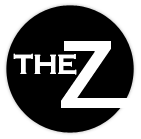What's an Insurance Declarations Page?
What's included in an insurance declarations page?
The insurance policy declarations page, also known as a "dec page," is the first page (or pages) of your auto or homeowners insurance policy. While they both serve the same general purpose, each one contains specific information about the coverages you have for your vehicle(s) or home.
What's an auto insurance declarations page?
Your car insurance declarations page concisely summarizes vital policy information, including policy periods and numbers, insured drivers, covered vehicles, and elected coverages. Think of your auto insurance declarations page as a quick cheat sheet if you have any questions about the specific terms of your policy.
Here's what you can expect to find on a car insurance declarations page:
Policy information
The essential details of your auto insurance policy include the policy number, the date coverage goes into effect, and the expiration date. You should also see your agent's name and contact information if you bought your policy through an agent.
Personal details
Your declarations page lists the names of all insured drivers. This includes the policyholder and any additional drivers covered under the same policy.
Vehicles covered
All cars covered by your auto insurance policy are listed on your declarations page. These are identified by make, model, year, and VIN.
Types of coverage
Your policy may consist of several different types of car insurance coverages. If you've chosen different types and amounts of coverage for each vehicle, your declarations page can help you keep them straight.
Coverage limits
Most coverages include a specific limit that you select when purchasing car insurance. You'll find each coverage limit for your policy listed on the declarations page. These may include per-person and per-accident limits for bodily injury liability and limits on any additional coverage types, such as uninsured motorist coverage or personal injury protection.
Deductible
You'll see your deductible amount for comprehensive car insurance coverage and auto collision coverage on your declarations page as well if you added those coverages to your policy.
Cost of coverage
Auto insurance premiums are a sum of the individual costs of each coverage you've selected. Your declarations page breaks this down to show how much you're paying for every coverage type and vehicle. If you're eligible for certain car insurance discounts, you'll see those listed, too.
Can I show my auto insurance declarations page if I'm pulled over?
Your declarations page generally should not be used as proof of insurance. It's a good idea to always carry a physical insurance card in your vehicle to show to law enforcement if you get pulled over, although you can also produce a digital insurance card in most states.
If you need to show proof of auto insurance to the Department of Motor Vehicles or your lender, you may need a certificate of insurance. This document contains information similar to a declarations page but omits specific details that third parties don't need, such as your auto insurance premium.
What's a homeowners insurance declarations page?
If you're looking for a general overview of your homeowners insurance coverage, your home insurance declarations page is the place to go.
Your homeowners insurance declarations page will typically contain the following information:
Policy information
You'll find your homeowners insurance policy number, effective date, and expiration date clearly stated. If you purchased your policy through an agent, you can also refer to the document to locate your agent's information.
Address
The address of the insured property can be found on your declarations page. You'll often see a note clarifying the type of dwelling, such as a single-family home, condominium, or mobile home.
Named insured
You and any co-applicant covered by your home insurance policy will be listed.
Mortgage lender
If you finance your home, your lender's information will be included. Remember that since the bank owns part of your home, they're entitled to compensation in the event of a loss — known as a loss payee.
Types of coverage
There are many different types of homeowners insurance coverages, including dwelling coverage, personal property coverage, personal liability coverages, and more. Your homeowners declarations page will list the various coverages that make up your policy.
Coverage limits
For each coverage, you'll see a value limit that represents the maximum amount the insurance company will pay in the event of a loss.
Deductible
The homeowners insurance deductibles you chose when you purchased home insurance will be stated on your declarations page. A deductible is the out-of-pocket amount you'll pay each time you file a covered claim.
Cost of coverage
Look to your home insurance declarations page to see how much you're paying in annual premiums and what type of payment plan you've agreed to, usually monthly or annually. Most insurers also make a note of the discounts you're receiving.
Why do I need an insurance declarations page?
Your declarations page exists primarily for your benefit. Review it carefully as soon as you receive it to make sure all the listed information is accurate. Keep it on hand for future reference in case you have questions about your policy or need to file a claim.
How to get an insurance declarations page
Your insurance company will usually send your insurance policy declarations page automatically as soon as you sign up for auto or home insurance. You'll find it at the beginning of your policy documents, which you may receive by email, fax, or regular mail.
Dan Zeiler
dan@zeiler.com
877-597-5900 x134

